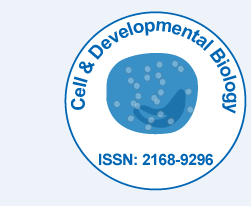
செல் & வளர்ச்சி உயிரியல்
திறந்த அணுகல்
ஐ.எஸ்.எஸ்.என்: 2168-9296

ஐ.எஸ்.எஸ்.என்: 2168-9296
Md Arifuzzaman, Naznin Akhtar and SM Asaduzzaman
Human Amniotic Membrane (HAM) is widely used as biological dressing material in reconstructive skin surgery, abdominal and vaginal reconstruction, plastic and cosmetic surgery and in ophthalmologic surgery. The objective of this study was to assess microbial quality of HAM during different stages of frozen HAM allograft processing and determination of antimicrobial susceptibility of isolated microorganisms. For this purpose, twelve amniotic sacs were collected from normal vaginal delivery of seronegative mother from Azimpur maternity, Dhaka, Bangladesh. Initial bioburden was determined by using Nutrient Agar (NA), McConkey Agar, EMB Agar, Potato Dextrose Agar (PDA). Total Viable Bacterial Count (TVBC) was calculated and Initial bacterial load was ranged from 39 to 5.25×103. No fungus was found. A total 28 bacterial isolates were selected. These bacterial isolates were identified on the basis of cultural (e.g. colony size, shape, opacity), morphological (e.g. gram reaction, cell shape and arrangement) and biochemical characterization (e.g. catalase, oxidase, carbohydrate fermentation, MR test and VP test). Of them, eight bacterial isolates were identified as Staphylococcus aureus, two were Staphylococcus epidermidis, nine were Escherichia coli, three were Salmonella typhimurium, one was Enterobacter aerogenes, one was Pseudomonas aeruginosa, four were Acinetobacter baumanii. Then, antimicrobial susceptibility pattern of isolated microorganisms were determined against ten antibiotics which includes Amphicillin, Streptomycin, Gentamycin, Neomycin, Imipenem, Vancomycin, Cloxacillin, Polymixin-B, Penicillin-G and Ciprofoxacin. It was found that, all bacterial isolates were sensitive to streptomycin and Penicillin-G. Thus, Streptomycin-Penicillin-G (Strep-P) cocktail was formulated and was used for the preparation of frozen AM. Then, bioburden was again determined by spread plate technique using the same media. Bacterial load in the processed HAM were ranged from 33 to 3.94 2. After then, HAM was preserved by using Dulbeco’s Modified Eagles Media (DMEM) and glycerol (1:1 ratio) and was stored at -80°C. Microbial quality of the preserved samples were checked at 07, 14, 21 & 30 days and no bioburden was found. Thus, it can be said that the antibiotic cocktail was suitable to remove the culturable microorganisms associated with HAM.